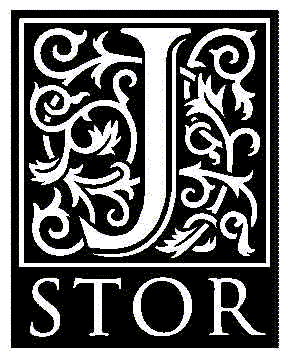
Comment on: Michael Carrithers: is
anthropology art or science?,
in: Current Anthropology
(Chicago/Il./USA: University of Chicago Press), vol. 31 no. 3 (1990), p. 274
CLIFFORD GEERTZ
Institute for Advanced Study, School of Social Science, Princeton, N.J. 08540,
U.S.A. 12 XII 89
I do not wish to comment on the substance of Carrithers's paper, which strikes me as distracted and banal by turns. I only wish to have it on record that I do not hold the views he attributes to me. I do not believe that anthropology is not or cannot be a science, that ethnographies are novels, poems, dreams, or visions, that the reliability of anthropological knowledge is of secondary interest, or that the value of anthropological works inheres solely in their persuasiveness. On the second page of Works and Lives, in a passage invoking ladies sawed in half, I explicitly, and as I thought forcefully, both denied that I held such views and predicted that I would be accused by the easily frightened of holding them.
I do, indeed--doesn't Carrithers?--think that rhetorical effectiveness has something to do with who gets believed and who doesn't and that it matters a bit who says what, where, when, and to what purpose. But the notion that I have an "absolute realist" conception of science is a sheer fantasy. (I have never written at any length on the nature of science, but if I did it would look more like Thomas Kuhn's work than anything else; it would not look, as much as I admire him, like Dan Sperber's.) So, too, is the notion that I differ from the views of Taylor, Hacking, Polanyi, or Roth that science is a human, thus social and cultural, activity, that it does not involve the search for absolute truth, that the specific form it takes varies from field to field, even from problem to problem, that it involves more than thinking and theorizing, and that representations are one thing and what they purport to be representations of, like Carrithers's of me, quite another ..
As I have spent much of my career vigorously opposing the idea that "there is one truth at which we aim ... [one] correct representation of the world" (or, I might add, anyone correct way of representing it), inside "science" or out, and that there is some red line to be drawn across thought polarizing "insubstantial art" and "firm science," it is more than a little dismaying now to be represented as defending it. Perhaps a more interesting question, after all, than why so many anthropologists can't write is why so many can't read. Or won't.
Current Anthropology, Vol. 31, No. 3 (Jun., 1990), 274.
online source: http://www.jstor.org
JSTOR's Terms and Conditions of Use provides, in part, that unless you have obtained prior permission, you may not download an entire issue of a journal or multiple copies of articles, and you may use content in the JSTOR archive only for your personal, non-commercial use.
Current Anthropology is currently published by The University of Chicago Press. Please contact the publisher regarding any further use of this work. Publisher contact information may be obtained at http://www.jstor.org/journals/ucpress.html.
Each copy of any part of a JSTOR transmission must contain the same copyright notice that appears on the screen or printed page of such transmission.

Using this text is also subject to the general HyperGeertz-Copyright-regulations based on Austrian copyright-law (2001), which - in short - allow a personal, nonprofit & educational (all must apply) use of material stored in data bases, including a restricted redistribution of such material, if this is also for nonprofit purposes and restricted to the scientific community (both must apply), and if full and accurate attribution to the author, original source and date of publication, web location(s) or originating list(s) is given ("fair-use-restriction"). Any other use transgressing this restriction is subject to a direct agreement between a subsequent user and the holder of the original copyright(s) as indicated by the source(s). HyperGeertz@WorldCatalogue cannot be held responsible for any neglection of these regulations and will impose such a responsibility on any unlawful user.
Each copy of any part of a transmission of a HyperGeertz-Text must therefore contain this same copyright notice as it appears on the screen or printed page of such transmission, including any specific copyright notice as indicated above by the original copyright holder and/ or the previous online source(s).